
I was laid out with a bad back last week, which didn’t really affect my birding as I wasn’t planning any at the time. But what happens when you’re on a trip and you can’t get out? I found out on my second day in Mkuze, a great game reserve in South Africa, earlier this year when on my first dark night, poor visibility, uneven ground and unsteady footing resulted in a twisted ankle and a day in camp keeping weight off it.
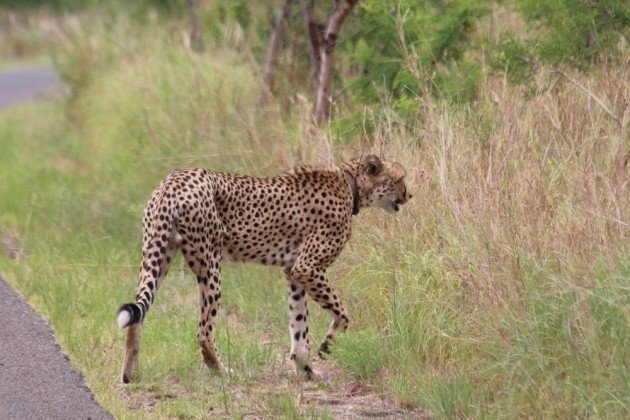 I wasn’t going to be seeing a Cheetah on my ass back at camp!
I wasn’t going to be seeing a Cheetah on my ass back at camp!
It’s a frustrating thing, knowing there are exciting animals out there to be seen and being stuck back at base. Fortunately, if I couldn’t go to the bush, the bush could come to me. And it did so in spectacular fashion, in the form of a mixed-species feeding flock, or a bird wave.
Bird waves are a feature of birds all around the world. They are large groups of birds of all different kinds of species. Scientists are still trying to work out exactly how they form, but they are usually led by core species that regularly join them and in some cases only feed in them and then supplemented by species that hold territories and join the flocks when the the flock passes by.
Joining a big flock means sharing the food you are looking for, but the cost of this is outweighed by the benefits. Big flocks have many eyes, which means thee are more eyes looking for the many birds of prey and snakes that would take small birds. And a large flock can also scare up insects that might otherwise be missed.
The wave that came through Mkuze’s camp was dominated, as always, by insect eating birds, each with their own way of finding it (which reduced the competition costs I mentioned above). Three species of woodpecker, from the large Bearded Woodpecker to the smaller Golden-tailed Woodpecker and the even smaller Cardinal Woodpecker, searched the trunks and branches, while on the smallest tips of the branches the tiny Long-billed Crombec clambered about in search of food. Fork-tailed and Square-tailed Drongos sat watching the ground intently until they swooped down to snatch something. A large family of White-crested Helmetshrikes, sounding like electrical toys, formed a flock within a flock, while the Black Cuckooshrike was happy to search for caterpillars alone. Also in large flocks were black Common Scimitarbills, part of a group of tree living relatives of the hoopoes that look like pretty much no other bird on Earth.
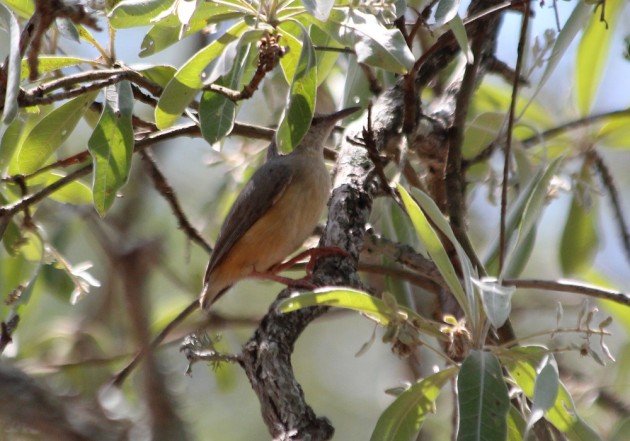 Long-billed Crombecs are members of the African warbler family
Long-billed Crombecs are members of the African warbler family
On the ground Blue Waxbills and Golden-breasted Buntings looked for fallen seed. And the Southern Black Tit was as at home foraging upside down as right side up, just like its relatives, the tits and chickadees, do back in Europe and America.
The next day my foot was mended enough to head back into the bush, but it was nice that my day in camp was as eventful as the bush would have been!


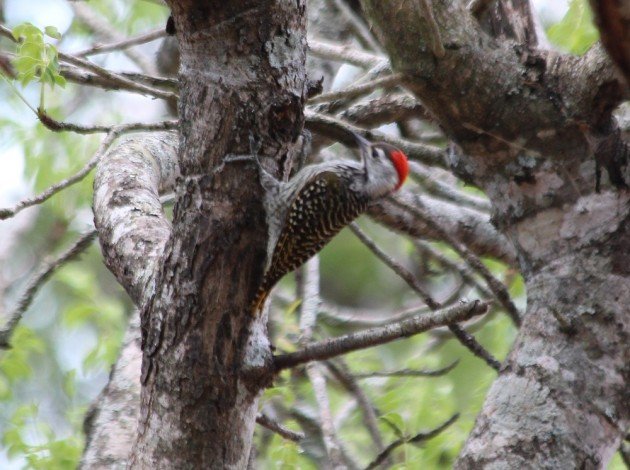
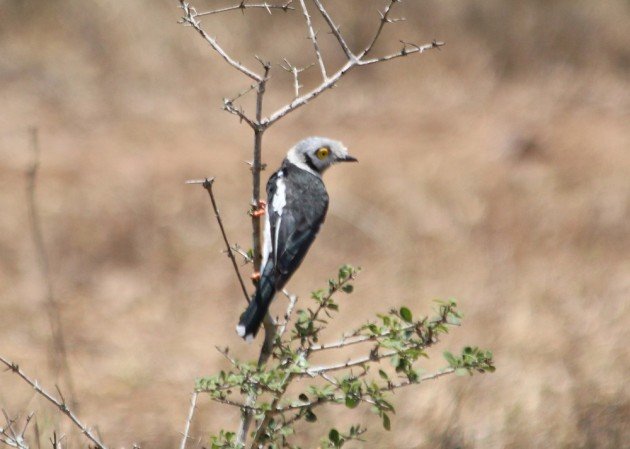
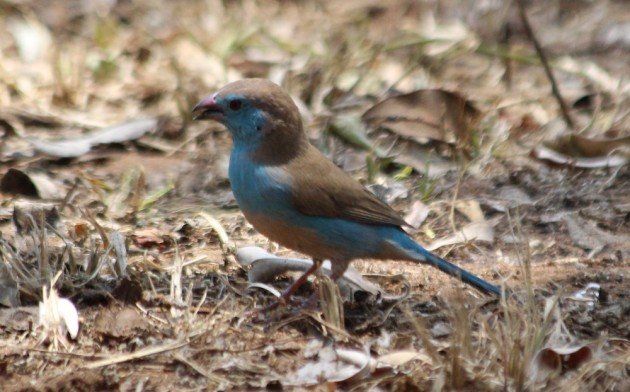
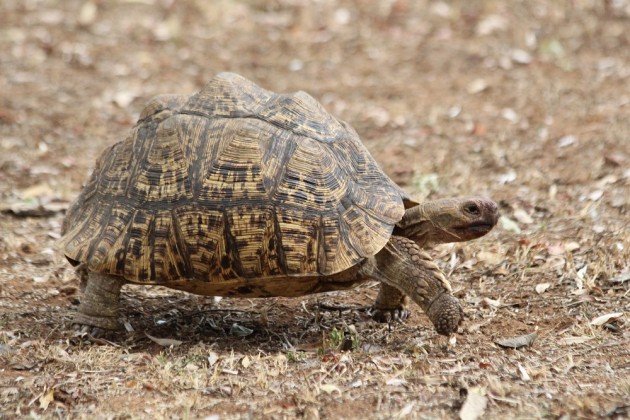











This post reminds me of the day I spent lounging outside my bungalow in Mkuze. I enjoyed seeing the many birds like the, Purple-crested Turacos in the trees, and the Lesser Striped Swallows that nested above the door frame, but also the many big African Mammals that came very close. A herd of Impala, some Nyala, (the big male was browsing the bushes that were planted alongside the bungalow. Both of these antelope species came to within about 15 feet of me.
I watched with amusement as a big male, Chacma Baboon broke into our kitchen, scattered the trash and dishes all over the floor, and nonchalantly strode away to join the rest of the troop. Our food was safe inside the locked refrigerator. The Vervet Monkeys were more circumspect and stayed outside.
There was also a fearless Nile Monitor and Leopard Tortoise. Wonderful place.
Love a good mixed flock, though I often get frustrated because they move on before I’ve had to chance to id every bird. I spent a couple of days in Mkuze on the ABA Safari last year. I hope you got to spend time in the blind once your ankle got better.